Avalanche
 The Game: Watch for falling rocks – because it’s your job to catch them. You control a series of containers arranged in a vertical row, and your task is to catch all of the rocks, without fail, not letting a single one of them hit the ground. The more rocks you catch, the more containers you’ll fill, and you’ll be left with fewer, and smaller, containers. If you let a rock through your defenses too many times, the game’s over. And you’ll probably be hit in the head with a lot of rocks. Neither outcome is really a good thing. (Atari, 1978)
The Game: Watch for falling rocks – because it’s your job to catch them. You control a series of containers arranged in a vertical row, and your task is to catch all of the rocks, without fail, not letting a single one of them hit the ground. The more rocks you catch, the more containers you’ll fill, and you’ll be left with fewer, and smaller, containers. If you let a rock through your defenses too many times, the game’s over. And you’ll probably be hit in the head with a lot of rocks. Neither outcome is really a good thing. (Atari, 1978)
Memories: Avalanche is a relic of the early days of videogaming, where no idea was left untried. It’s a fiendishly simple and surprisingly tense little number for what appears to be such a simple game. [read more]

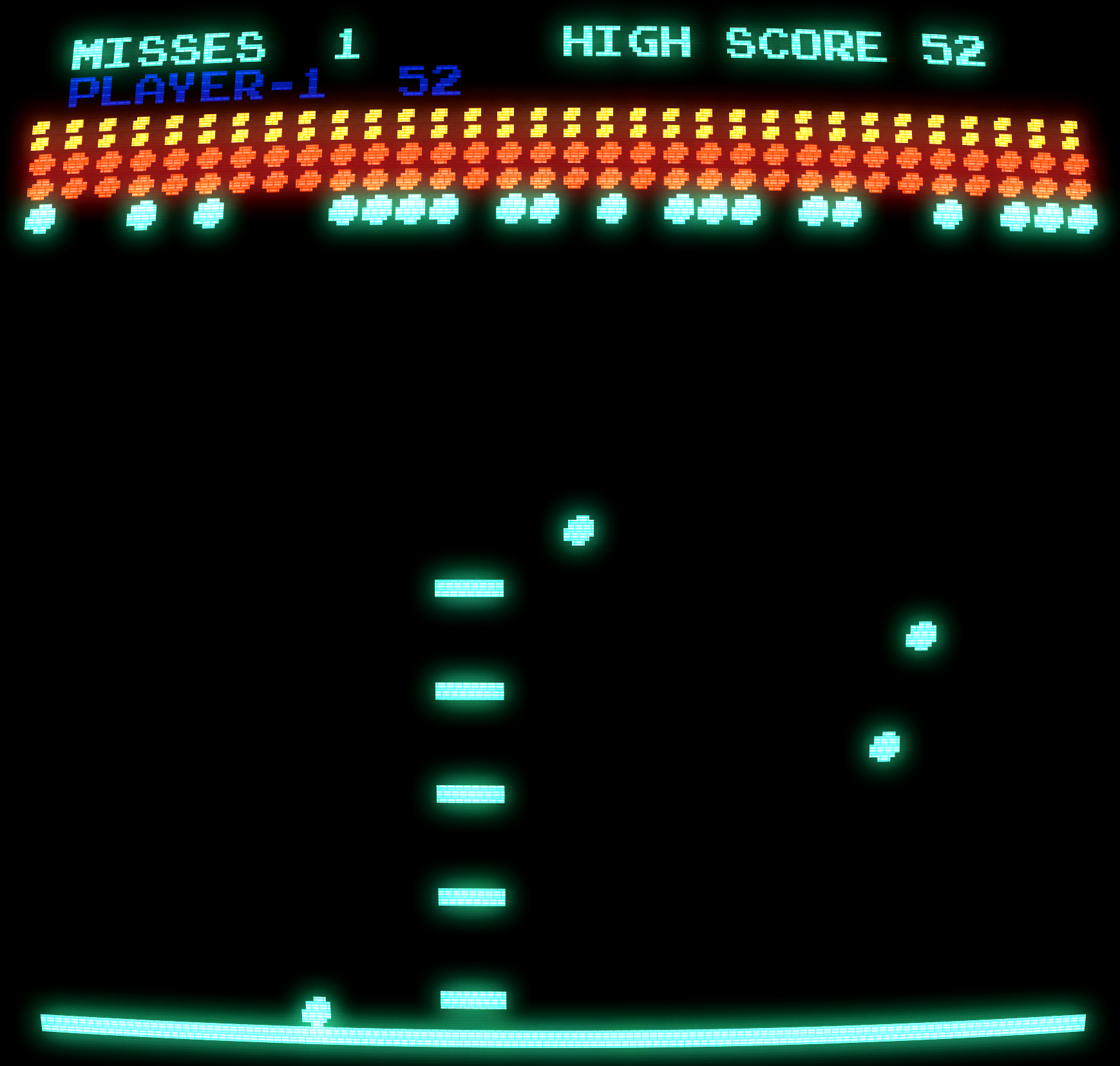
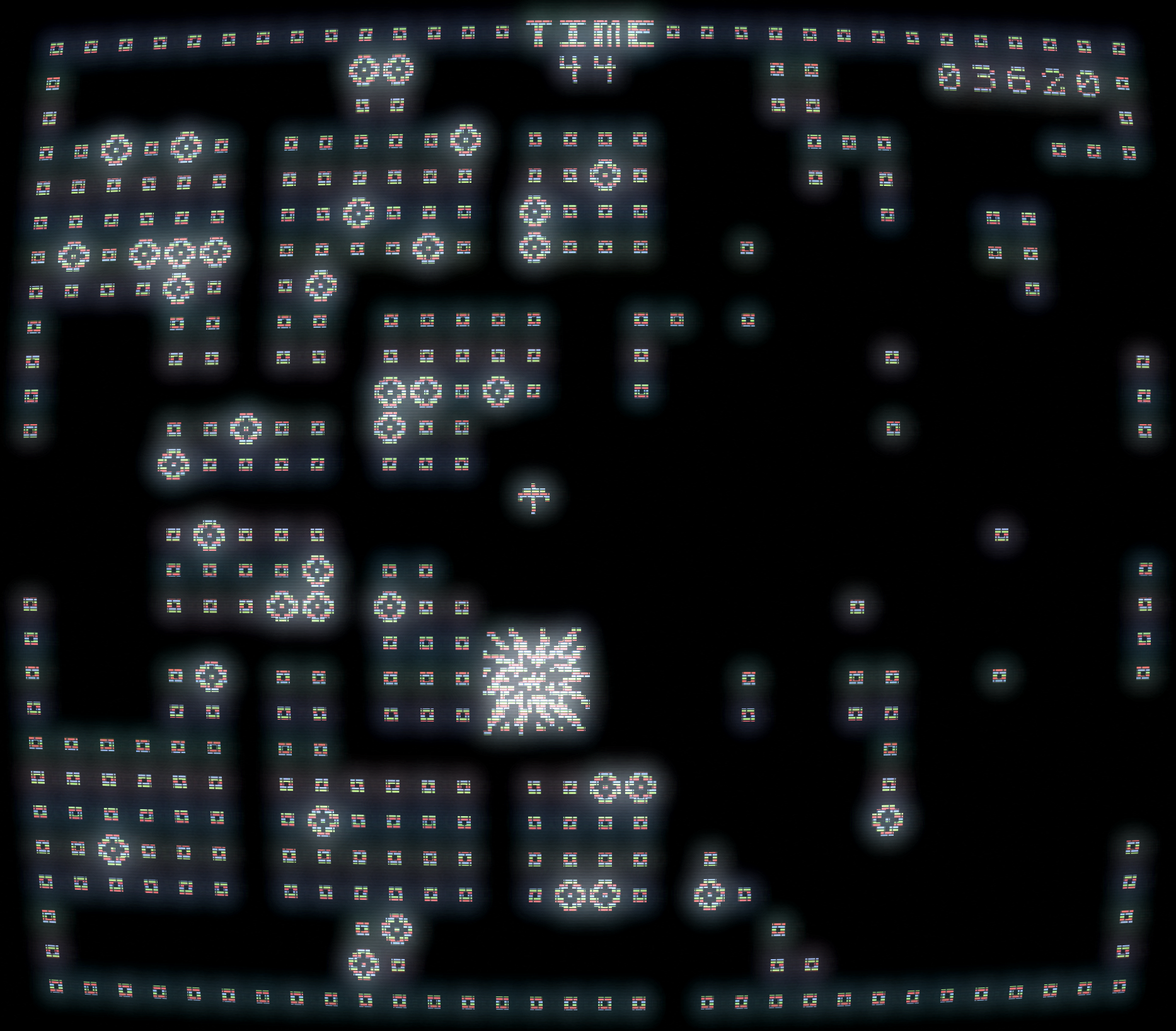
 The Game: Piloting a mobile cannon around a cluttered playfield, you have but one task: clear the screen of mines, without blowing yourself up, in the time allotted. If you don’t clear the screen, or you manage to detonate a mine so close to yourself that it takes you out, the game is over. If you do clear all the mines, you get a free chance to try it again. Two players can also try to clear the minefield simultaneously. (Gremlin, 1978)
The Game: Piloting a mobile cannon around a cluttered playfield, you have but one task: clear the screen of mines, without blowing yourself up, in the time allotted. If you don’t clear the screen, or you manage to detonate a mine so close to yourself that it takes you out, the game is over. If you do clear all the mines, you get a free chance to try it again. Two players can also try to clear the minefield simultaneously. (Gremlin, 1978)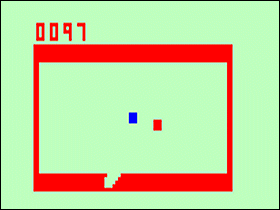 The Game: Trapped in a square or rectangular arena, the player is represented by a mobile square. Another projectile punches its way into the arena and begins ricocheting around; points accumulate rapidly the longer the player’s square avoids contact with the projectile, but starting at 200 points, an additional projectile is added every 100 points, each on its own chaotic, bouncing path. The game ends when the player inevitably collides with one of these projectiles. (Fairchild, 1978)
The Game: Trapped in a square or rectangular arena, the player is represented by a mobile square. Another projectile punches its way into the arena and begins ricocheting around; points accumulate rapidly the longer the player’s square avoids contact with the projectile, but starting at 200 points, an additional projectile is added every 100 points, each on its own chaotic, bouncing path. The game ends when the player inevitably collides with one of these projectiles. (Fairchild, 1978)

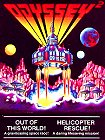 The Game: In this two-for-one game, you take to the skies in one of two different ways. Out Of This World! is a classic lunar lander game, in which you must balance your descent speed and your remaining fuel to make a safe landing on the surface of the moon, and then safely return to dock with your command module in orbit again. Helicopter Rescue! is a simplistic game in which you pilot a helicopter, trying to retrieve as many people as possible from a doomed hotel and take them safely to a nearby ground station. Precision and timing are of the essence. (Honestly, though, we never see what’s wrong with that hotel – there’s no evidence of fire, terrorists, massive fiddygibber infestations…) (Magnavox, 1979)
The Game: In this two-for-one game, you take to the skies in one of two different ways. Out Of This World! is a classic lunar lander game, in which you must balance your descent speed and your remaining fuel to make a safe landing on the surface of the moon, and then safely return to dock with your command module in orbit again. Helicopter Rescue! is a simplistic game in which you pilot a helicopter, trying to retrieve as many people as possible from a doomed hotel and take them safely to a nearby ground station. Precision and timing are of the essence. (Honestly, though, we never see what’s wrong with that hotel – there’s no evidence of fire, terrorists, massive fiddygibber infestations…) (Magnavox, 1979)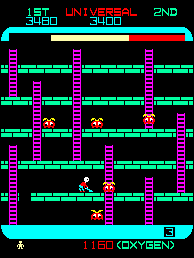 The Game: An astronaut is trapped in an enclosed, vertical space with aliens who have a taste for human flesh. With his oxygen supply running out, he must dig holes in the floors of the multi-level structure and lure the aliens into those holes, which gives him mere seconds to dispose of the trapped aliens by filling the holes in. Clearing a level of aliens replenishes the oxygen tank and deposits the player on a new screen full of aliens, some of whom require extra effort – namely, the carefully-planned digging of an entire vertical shaft to fall through – to kill. (Universal, 1980)
The Game: An astronaut is trapped in an enclosed, vertical space with aliens who have a taste for human flesh. With his oxygen supply running out, he must dig holes in the floors of the multi-level structure and lure the aliens into those holes, which gives him mere seconds to dispose of the trapped aliens by filling the holes in. Clearing a level of aliens replenishes the oxygen tank and deposits the player on a new screen full of aliens, some of whom require extra effort – namely, the carefully-planned digging of an entire vertical shaft to fall through – to kill. (Universal, 1980)

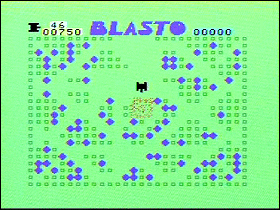 The Game: Piloting your mobile cannon around a cluttered playfield, you have but one task: clear the screen of mines, without blowing yourself up, in the time allotted. If you don’t clear the screen, or manage to detonate a mine so close to yourself that it takes you out, the game is over. If you do clear all the mines, you get a free chance to try it again. Two players can also try to clear the minefield simultaneously. (Texas Instruments, 1980)
The Game: Piloting your mobile cannon around a cluttered playfield, you have but one task: clear the screen of mines, without blowing yourself up, in the time allotted. If you don’t clear the screen, or manage to detonate a mine so close to yourself that it takes you out, the game is over. If you do clear all the mines, you get a free chance to try it again. Two players can also try to clear the minefield simultaneously. (Texas Instruments, 1980)
